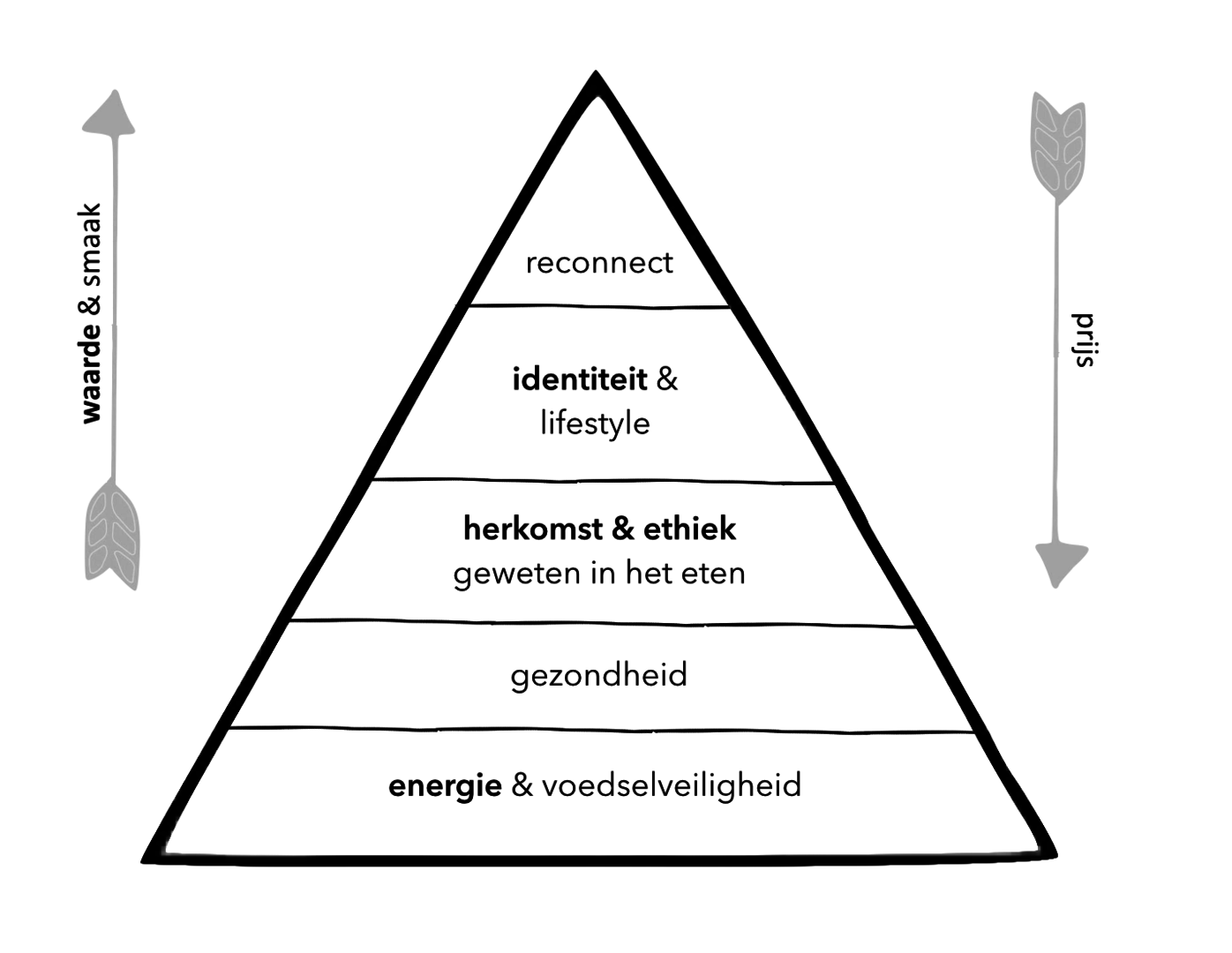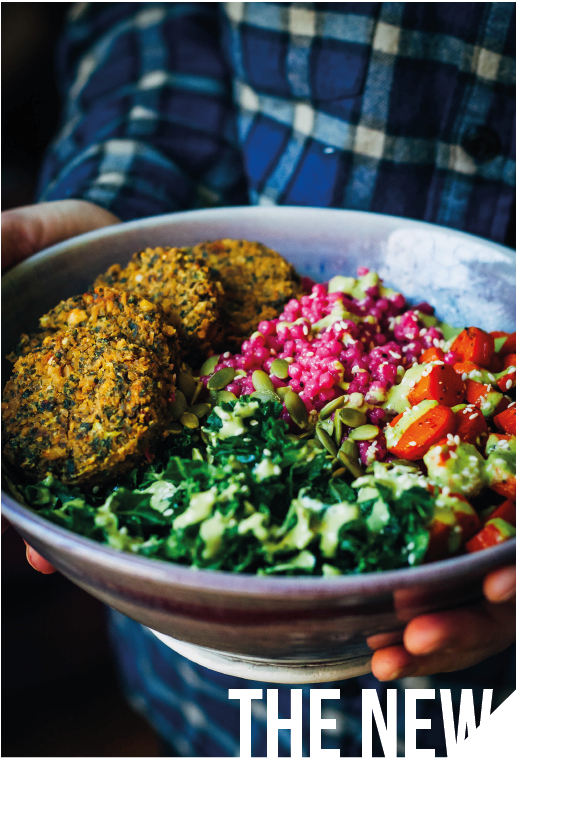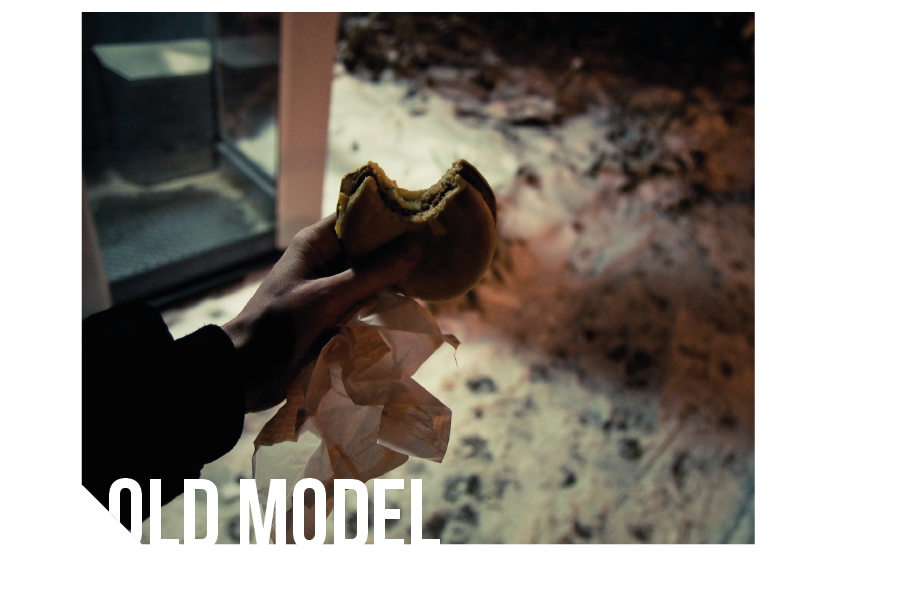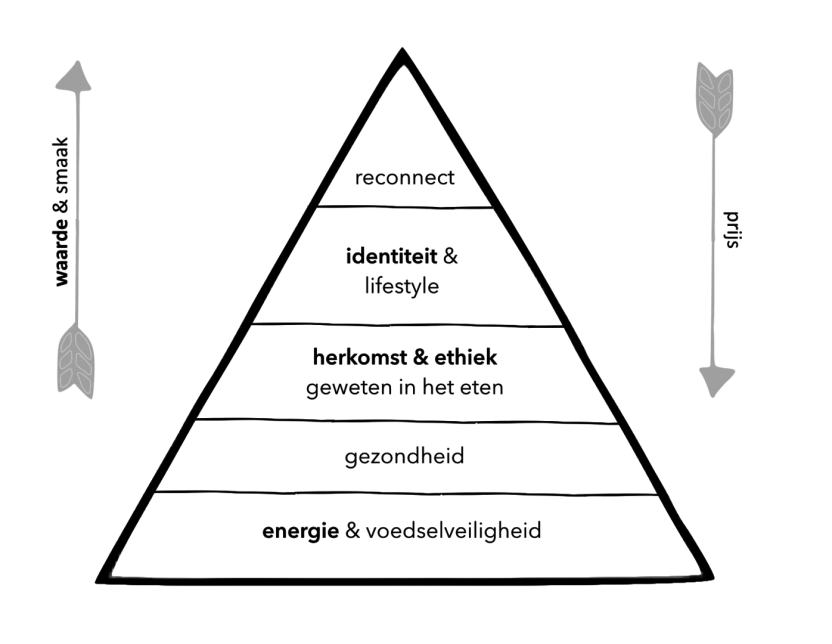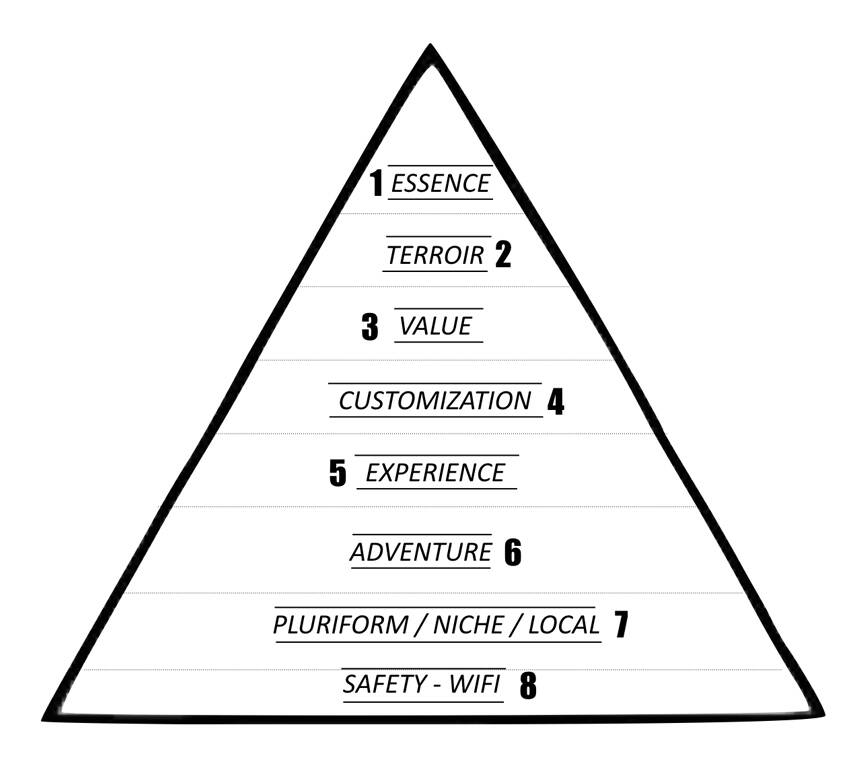
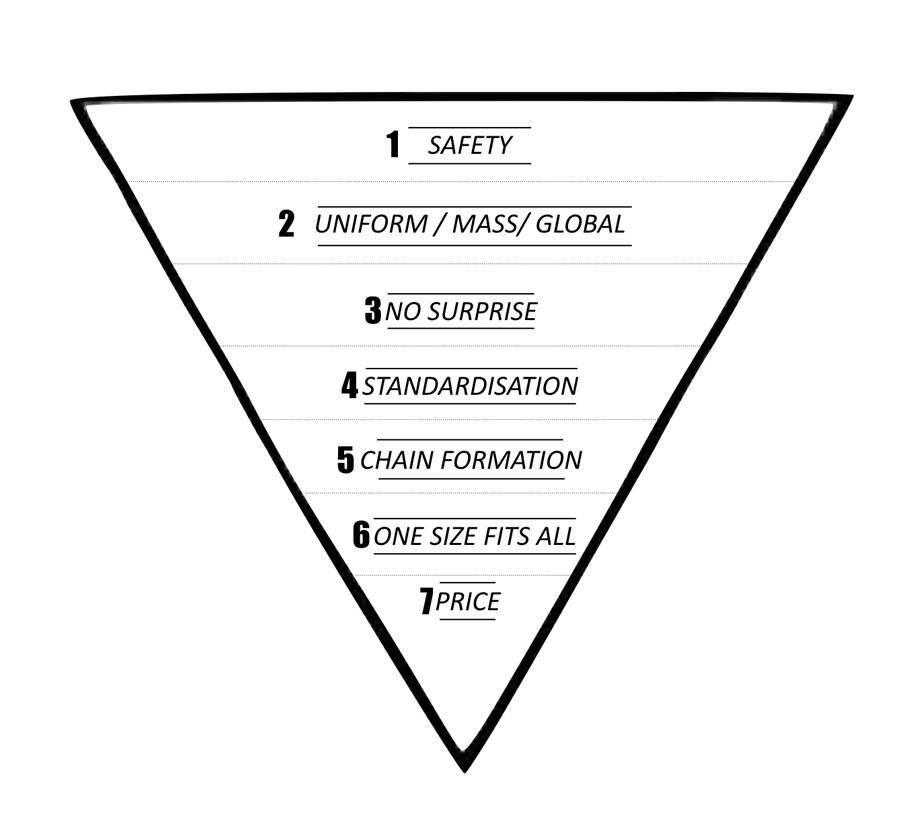
Music: Adam Young - 1977
The new model
the race to the top
Innovation isn’t about lowering the price even more; it’s about creating value. The rise of the Internet and online reviews are taking power away from the mass-market products, because the sense of safety and security is provided by the reviews instead of the uniformity. This creates space for a kaleidoscope of niches.
Each niche is able to generate its own fan base, as well as market access. A niche can innovate by introducing values like craftsmanship, fresh, local, animal friendly, ethical, healthy, clean, multiform, and unique. The industrial one size fits all approach turns into an individual, limited edition made for you experience. Premiumization everywhere. The ultimate expressions of this new model are the products and menus embracing terroir: the signature of season, climate, and soil. These products are the result of working with nature, instead of trying to control nature. The flavors are pure, not transformed or artificially enriched. This essence is the final stop of the new model: the race to the top. Products and menus and concepts living and breathing the different phases of this new model will speak to the new generations. They are trusted and believed.
the race to the bottom
The old model
We make a uniform product for the mass market. This offers the consumer a sense of security. They trust the product and know what to expect. Because the consumer isn’t keen on surprises we are able to standardize our production process as well as our products, and build a chain that spans the globe. Our product is designed to appeal to as many people as possible, and to never change in composition or flavor. And finally, when we’ve perfected the efficiency of our production we can charge the lowest amount of money. This 20th century model for success isn’t good enough for the 21st century. The concepts, menus, and products are unhealthy. They are a leading cause of obesity, contribute to climate change, and are not animal friendly. The marketing and advertising that these brands are built on is no longer credible.
Food Inspiration has researched this topic and now introduces the flip in the pyramid of value.
Food is experiencing the biggest wave in innovation in years. The number of indie food brands taking over the supermarket shelves has never been higher. Food concepts focused on sustainable, locally sourced products are popping up in the big cities all over the world. And in the gastronomic world we’re seeing a resurgence of conscientious food, with chefs that are plant forward, animal friendly, and sustainable.
Entrepreneurs and consumers alike are much more open to adventure and putting the experience first. They value the craft, believe in the unique, true story behind a product, and recognize terroir: we are turning away from the global to embrace the local. Time and place should be tasted on new menus. Homogenous food has lost all appeal.
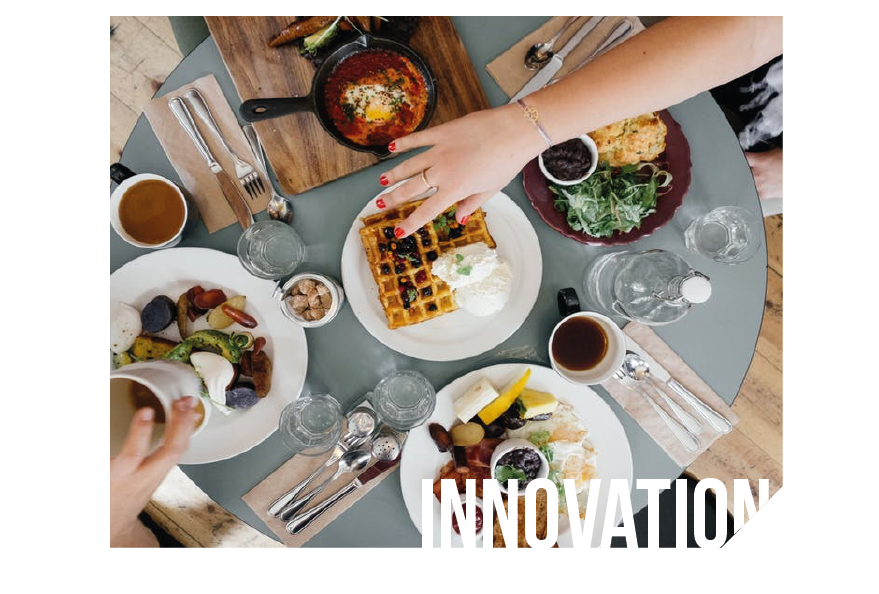
wave
What’s the one thing new food concepts, food brands, and food menu’s have in common? The people behind them are no longer aiming for the most competitive price point, but for the highest possible value.

Text: Hans Steenbergen
The great transition in food




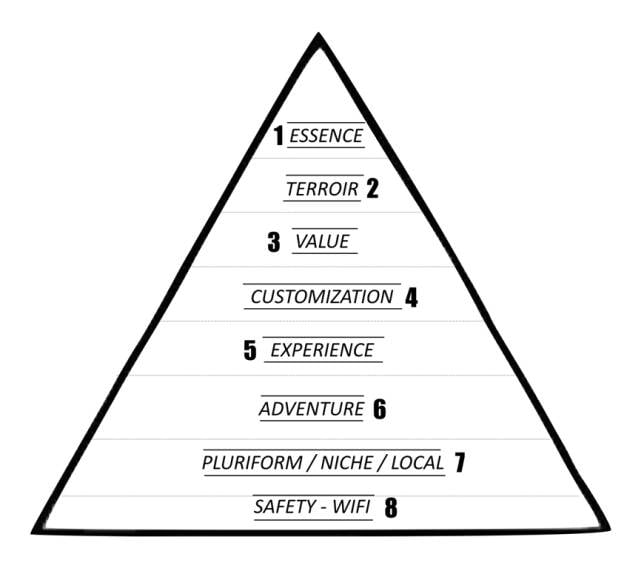
Innovation isn’t about lowering the price even more; it’s about creating value. The rise of the Internet and online reviews are taking power away from the mass-market products, because the sense of safety and security is provided by the reviews instead of the uniformity. This creates space for a kaleidoscope of niches.
Each niche is able to generate its own fan base, as well as market access. A niche can innovate by introducing values like craftsmanship, fresh, local, animal friendly, ethical, healthy, clean, multiform, and unique. The industrial one size fits all approach turns into an individual, limited edition made for you experience. Premiumization everywhere. The ultimate expressions of this new model are the products and menus embracing terroir: the signature of season, climate, and soil. These products are the result of working with nature, instead of trying to control nature. The flavors are pure, not transformed or artificially enriched. This essence is the final stop of the new model: the race to the top. Products and menus and concepts living and breathing the different phases of this new model will speak to the new generations. They are trusted and believed.
the race to the top
The new model
We make a uniform product for the mass market. This offers the consumer a sense of security. They trust the product and know what to expect. Because the consumer isn’t keen on surprises we are able to standardize our production process as well as our products, and build a chain that spans the globe. Our product is designed to appeal to as many people as possible, and to never change in composition or flavor. And finally, when we’ve perfected the efficiency of our production we can charge the lowest amount of money. This 20th century model for success isn’t good enough for the 21st century. The concepts, menus, and products are unhealthy. They are a leading cause of obesity, contribute to climate change, and are not animal friendly. The marketing and advertising that these brands are built on is no longer credible.
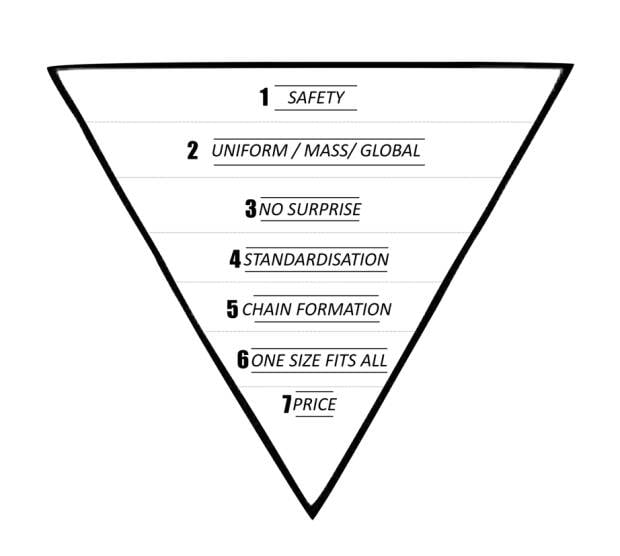
the race to the bottom
The old model
Food Inspiration has researched this topic and now introduces the flip in the pyramid of value.
Food is experiencing the biggest wave in innovation in years. The number of indie food brands taking over the supermarket shelves has never been higher. Food concepts focused on sustainable, locally sourced products are popping up in the big cities all over the world. And in the gastronomic world we’re seeing a resurgence of conscientious food, with chefs that are plant forward, animal friendly, and sustainable.
Entrepreneurs and consumers alike are much more open to adventure and putting the experience first. They value the craft, believe in the unique, true story behind a product, and recognize terroir: we are turning away from the global to embrace the local. Time and place should be tasted on new menus. Homogenous food has lost all appeal.
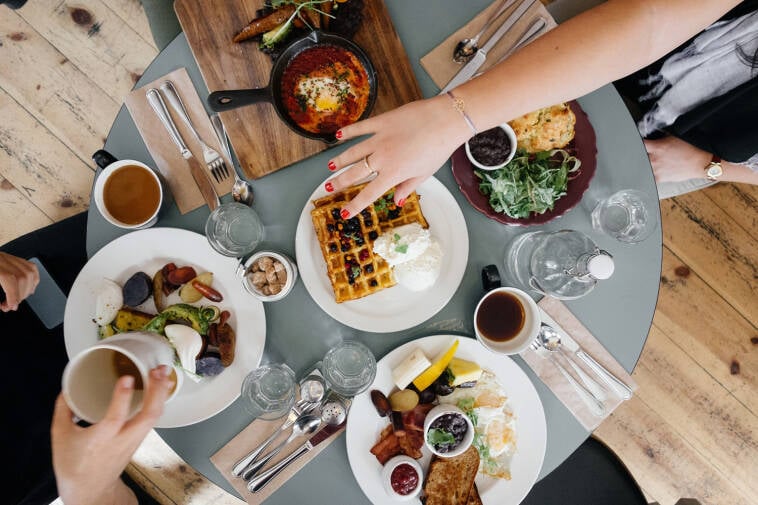
Text: Hans Steenbergen
What’s the one thing new food concepts, food brands, and food menu’s have in common? The people behind them are no longer aiming for the most competitive price point, but for the highest possible value.
The great transition in food

